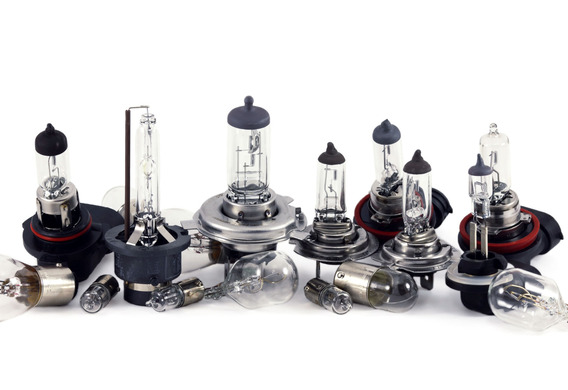
In its time, the USSR existed GOST, according to which car lamps were marked. It also contained a transcript of the markings. For example, AMN meant "miniature lamp". The model number, voltages (12 Volts) and wattage capacity were added to the letter label. The vast majority of modern drivers do not suspect the existence of such reductions and would be surprised to learn that GOST 2023-88 has not been canceled and continues to operate for the CIS countries.
Therefore, in the post-Soviet period, the European classification of the IEC or International Electrotechnical Commission (International Electrotechnical Commission), an international non-profit organization involved in the development of standards in the field of electrical, electronic and related technologies, was widely distributed in Russia. The [ [ IEC]] classification also includes abbreviations that, however, can be deciphering and can provide the person with all the necessary information. However, the ordinary user still comes in gloom when he hears the question "Do you have the lamps in the passing beam?"-"Do you have H3 or H4?"

What do all these letters mean?
T is a lamp with a small cap. R is a lamp with a cap of 15 mm and a diameter of 19 mm. P-lamp with a cap with a height of 15 mm, diameter of bulb to 26.5 mm. W is usually a power symbol in Volta. If the marking begins with a letter W means the absence of a metal cap (there is a semblance of cap and wire contacts. A halogen lamp. Y-if the number is followed by a number, it is a lamp with an orange bulb (stop lamps and a).
Cap lamps also bear additional markings
P-the starter mark at the beginning of the marking means the cap of the flange type. VA is the cap with the symmetrical pins. BAY is the cap with the pins, one of which is displaced by height relative to the other. BAZ-cap with pins, one of which is displaced at a height relative to the other and is closer to or farther from the centre. SV is a lamp with cap type of cap, that is, inserted into two cartridges simultaneously (from one end of the bulb). E is the carving.
Which lamps have to change the thicket
The most commonly used lamps are the main types of lamps used in passing and driving lamps, position lamps, direction indicators, main and additional stop lamps, in the salon-lighting devices, and the illumination of keys and the panel of instruments.
Information on the most popular bulbs can be structured into one list
R2 is a long/passing lamp with a round bulb and a metal cap, a rated wattage of 45/40 Volt. Used, for example, in the cars of the family "Zhiguly" 2101, 21011, and so on. H1 is a halogen lamp for fog-lamps with a short flatten bulb and a long metal cap. In the shop for this lamp you can hear the epithet "direct". Also used in passing beam headlamps and driving beam headlamps with a four-beam headlight system. For example, in the "linden" headlights of Nissan auto-start and mid-nineties. Rated power of 55 watts. H2 is a flat halogen lamp with a glassy glass bulb and steel cap in the form of an asymmetrical plate. It is used in the passing beam and the driving beam of French-made motor vehicles. Rated power of 55 watts. H3 is a flat halogen-halogen-halogen with a metal cap and a "tail" in the form of a wire with contact at the end. Used in supplementary illumination, PTF. Rated power of 55 watts. H4 is probably the most common halogen lamp. Used in the headlights of a great many cars. Two spirals, a long/dipped-beam. Nominal capacity: 60/55 Watt. HB3/HB4 is very similar. For these lamps the informal term "curves" used in the form of a cap of 90 degrees shall be used. Applicable in four-beam headlamps (HB3) and passing lamps (HB4). HB4 is also used in the PTFs for many modern cars. Rated power 55/60 Watt. P21W and PY21W is a filament lamp with a cylindrical Bayonet cap, docking at 45 degrees. They shall be used in the stop lamps, the emergency alarm lamps. PY21W is a lamp with an orange bulb in the rear fog lamp. P21/5W is a filament lamp with a cylindrical Bayonet, a two-spiral. In the case of a stop lamp, if the lamp of the stop lamp is simultaneously a position lamp. The nominal capacity is 21/5 watts. R5W is a small filament lamp with a round glass bulb and a cylindrical metal cap of the Bayonite type. Applicable to rear and front position lamps. T4W is a 5 watt uncool lamp, used in front position lamps of many modern cars. C21W is the filament lamp with a metal cap at both ends of the cylindrical glass bulb. Used in reversing lamps. D1S is a gas-discharge lamp (xenon) with a cap and two long contacts. The estimated capacity is 35 to 40 watts. Used in passing beam headlamps with a 4-fold exhaust system after 92 years. D2R = gas-discharge light (xenon) with metal cap. The estimated capacity is 35 to 40 watts. Used in passing beam headlamps with a 4-fold exhaust system after 96 years.
This article is far from being a complete list of common lamps of all types. It should be remembered that lamps in American cars are marked differently, since the US has a different classification system, but most lamps are identical. By remembering the value of the Liter, it is possible to easily match the lamps for his car and to communicate with the salespeople with knowledge of the case.







